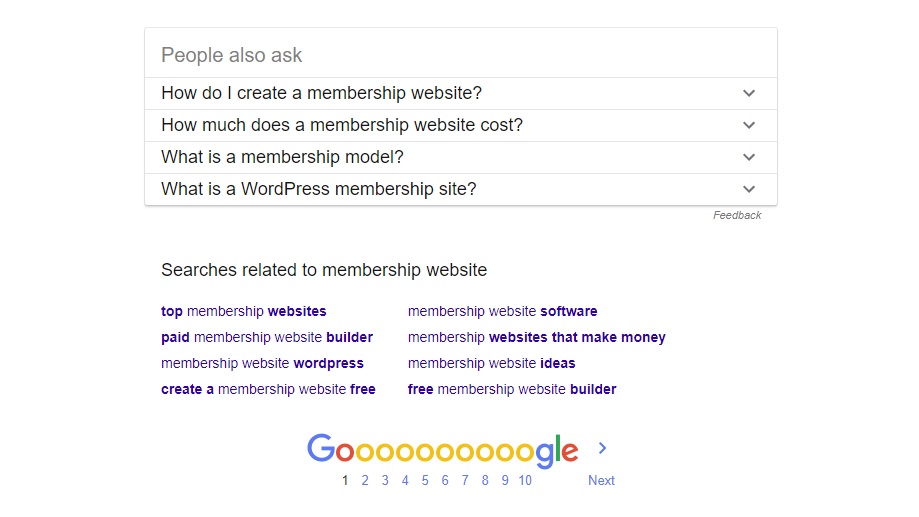In the beginning, there was the word – how to create a winning keyword strategy for SEO from scratch

In the beginning, there was the word – or the keyword. Your keyword strategy is the bedrock of your SEO strategy. Before you get stuck into creating SEO content you need to have a well-thought-out and documented keyword strategy in place.
What is a keyword strategy, you ask?
A keyword strategy is a list of keyword clusters you would like your business to be found on search engines for as part of your overall SEO strategy. Your keyword strategy includes short focus keywords and also “long-tail” keywords that are related to the cluster.
Your keyword strategy also includes a content plan to help you get found for your chosen keywords. In your content plan, you will have actions that are based around or include your keywords – such as writing blog posts, optimising landing pages, and publishing SEO content.
So, how you can create your own winning keyword strategy for your SEO efforts? We will show you in this article.
Firstly, get to know your target audience
Step 1 is getting to know your target audience. Your whole keyword strategy relies on what your audience is searching for online. This means you need to dig deep and find out what phrases and terminology they are using. Many businesses rely on overly-branded terms that describe their own products and services, these tend to not perform well in keyword strategy.
To find out keywords that will work for your target audience, you should:
- Interview your target audience and write down the specific words and phrases they use
- Ask them if they understand the terms and phrases that you would choose
- Read industry publications and find out what #hashtags are being used
- Research keyword volume – don’t worry, we cover this in the next step!
Also, don’t be afraid to rethink how you talk about your business and the services you offer. Starting your keyword strategy can be eye-opening for many businesses and you will likely discover new things about your target audience.
Choose a keyword research and tracking tool
There are many, many keyword tools out there. You can use Woorank to track your keywords over time. Moz to measure keyword metrics, and BuzzSumo and SEMrush for more research. Get to grip with these tools and find out which ones suit your way of working and budget.
One thing that you will need to invest in is a tool that will continually crawl your website and track your keyword progress. We mentioned Woorank above, but another good option is Agency Analytics.
Add keywords to track and analyse
The next step is creating a large database of keywords that you want to research. Try to include wide-ranging keywords into your tracking tool, and experiment with new phrasings, even if you don’t use them already.
You won’t need to keep all of your keyword terms in your tracking tool forever, but you will develop better judgement the more phrases that you include. Try to aim to have something between 50-100 keyword options.
Here’s a little tip: search for one of your keywords in Google and see what comes up for related searched. These will often give you new ideas as to what your audience is searching for.

Choose the best targets for your keyword strategy
Next step, streamline your keyword list into the best targets. When doing this it pays to remember that the very best targets have:
- High relevance to your business or services
- High volume – at least several dozens to several hundred monthly searches
- Low to medium difficulty – if you are new to keyword strategy, you don’t have a lot of authority and will find it tough to rank for anything higher than a 7/10 difficulty
- An existing URL that already ranks – if you already rank for a keyword that already shows up in a google search, it is a good target as you already have momentum building
You will be able to find all of these analytics using the tools I mentioned above. Also, keep notes of all of the metrics in a spreadsheet so you can reference them later on.
It also pays to keep a note of low, medium, and high priorities based on the analytics. Remember to keep asking questions like what are the most relevant terms to my business? What keywords have enough volume to drive visitors to my website? Which keywords aren’t so difficult so that I can have some impact? The keywords that answer these questions are the most high-priority.
Organise your keywords into content clusters
Content clusters (also known as topic clusters) are groups of content around a similar topic. By producing content in clusters and hyperlinking between them, you tell Google that you have wide authority on the subject. This helps you rank well in searches.
Using the high-priority keywords that you listed, choose a couple that will be the main ones of your new content clusters.
For the next step, think of long-tail variations of these keywords. Long-tail keywords will usually have less volume but are much more specific. For example, “Keyword Strategy” at the centre might yield “create a keyword strategy”, “keyword strategy for membership organisations”, or “keyword strategy best practices”.
Next, come up with an action for each keyword. If you are already ranking for that term, your action might be to add more website links to the ranking page or optimise the content for the specific keyword.
If you aren’t already ranking for the target keyword, start by creating an SEO page for it.
Write, publish, and revise content
Now that you have an action plan for your keyword strategy, it is time to start writing! Try to aim to publish at least one blog post a week, or even twice or more if your industry is heavily saturated with content.
Refreshing your old content with new keywords is a good way to recycle it. You should also keep publishing new SEO pages as part of your ongoing SEO strategy.
SEO pages are essentially landing pages that are targeted for a keyword, usually based around one of your services or products. This means that you need to keep your targeted keyword for each landing page closely related to the service you are promoting. Always include plenty of content and rich images on these pages, and a form for conversion.
Also, remember to bind all of your content together with hyperlinks. Google will follow these to understand your authority on a topic.
Analyse, analyse, and analyse!
It is really important that you continue to analyse your content using the tracking tools we talked about earlier.
Keep checking your progress periodically, looking out for details like:
- Did you improve your rank on Google? Did you make it to the second or third page or even the first?
- Where are you standing in keyword rankings, and for which URL?
- How many visitors are you getting to that page?
- If you are getting success, how can you repeat this for your other keywords?
By analysing these metrics, you can work out how to optimise your strategy. By keeping at it and reworking over time, you will create a winning SEO and keyword strategy that will help you bring in lots of new leads.



